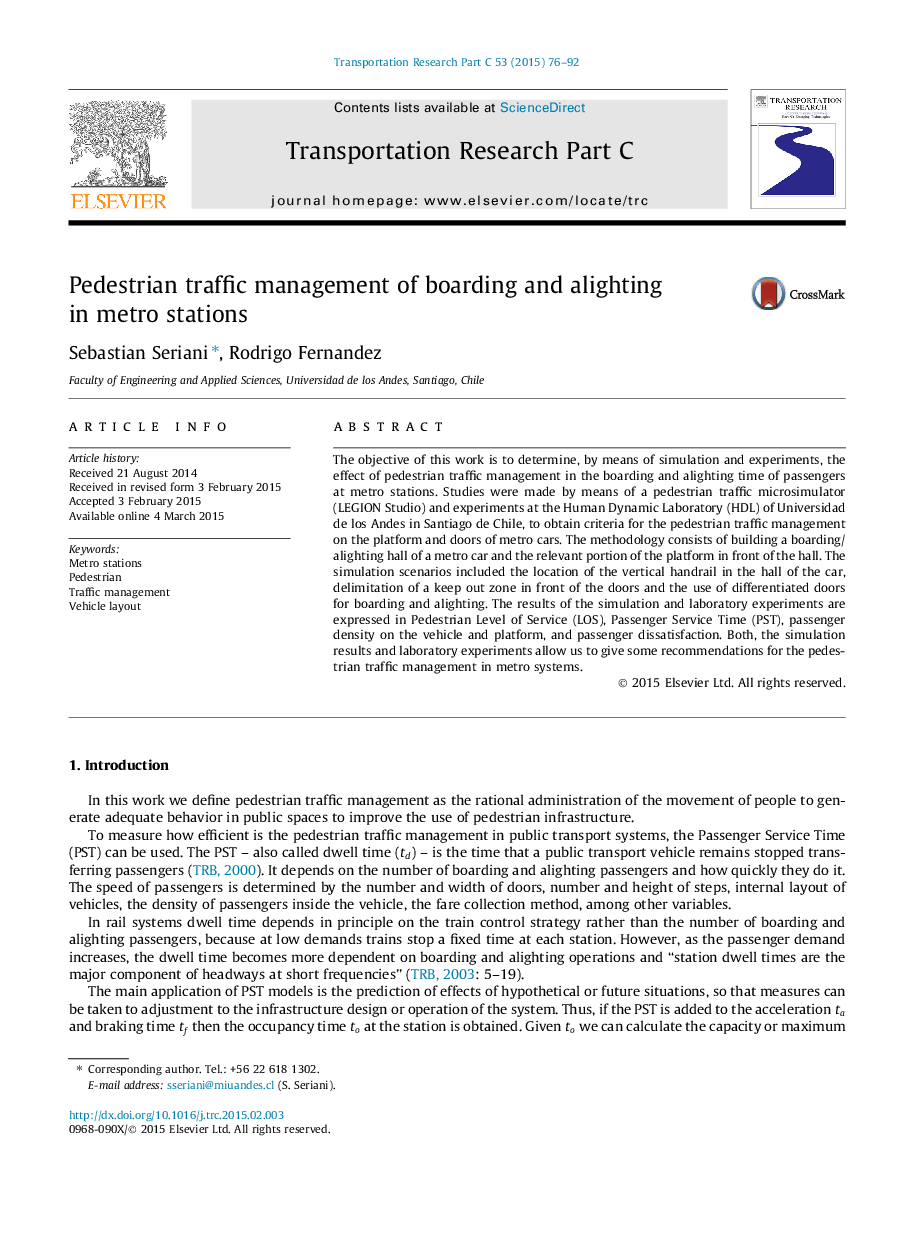| Article ID | Journal | Published Year | Pages | File Type |
|---|---|---|---|---|
| 524980 | Transportation Research Part C: Emerging Technologies | 2015 | 17 Pages |
•The pedestrian traffic management in public transport doors is studied.•Pedestrian simulation allows us selecting best designs for further real scale experimentation.•The use of vertical handrails has significant impacts in the Passenger Service Time in metro stations.•Laboratory experiments show that the differential uses of boarding and alighting doors produce the best results.•Results are valuable; relative values between experiments could have not been predicted in advance.
The objective of this work is to determine, by means of simulation and experiments, the effect of pedestrian traffic management in the boarding and alighting time of passengers at metro stations. Studies were made by means of a pedestrian traffic microsimulator (LEGION Studio) and experiments at the Human Dynamic Laboratory (HDL) of Universidad de los Andes in Santiago de Chile, to obtain criteria for the pedestrian traffic management on the platform and doors of metro cars. The methodology consists of building a boarding/alighting hall of a metro car and the relevant portion of the platform in front of the hall. The simulation scenarios included the location of the vertical handrail in the hall of the car, delimitation of a keep out zone in front of the doors and the use of differentiated doors for boarding and alighting. The results of the simulation and laboratory experiments are expressed in Pedestrian Level of Service (LOS), Passenger Service Time (PST), passenger density on the vehicle and platform, and passenger dissatisfaction. Both, the simulation results and laboratory experiments allow us to give some recommendations for the pedestrian traffic management in metro systems.
